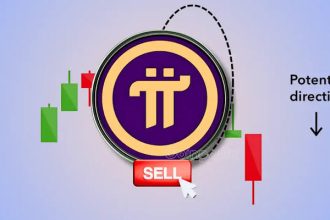Introducing Solana and Sidra Bank
Solana: A High-Performance Blockchain
Solana is an open source project implementing a new, high-performance, permissionless blockchain. Solana aims to solve the scalability issues faced by blockchains like Bitcoin and Ethereum by using an innovative hybrid consensus model called Proof of History (PoH) combined with a high performance transaction processing capability.
Sidra Bank: A Shariah-Compliant Digital Asset
Sidra Bank is working to launch Sidra, touted as the world’s first decentralized digital asset that fully complies with Shariah law. Shariah law follows Islamic religious law and prohibits certain financial practices like charging interest. Sidra Bank aims to make blockchain and cryptocurrency technology accessible to the large Muslim population globally.
Different Approaches to Decentralization
While Solana and Sidra Bank both aim to provide decentralized blockchain solutions, their approaches differ significantly. Solana focuses on scalability and high performance to compete with traditional payment networks. In contrast, Sidra Bank tailors its solution to align with the religious and ethical values of Islamic finance.
Solana validates transactions using a hybrid model of proof of stake and proof of history. This allows Solana to handle over 50,000 transactions per second. Sidra Bank will implement a proof of stake model that complies with Shariah law. For example, Sidra Bank will not allow users to stake Sidra tokens and earn interest, as earning interest is prohibited under Shariah law.
Overall, Solana and Sidra Bank represent two distinct approaches to building decentralized blockchain networks. Solana prioritizes scalability and transaction speed, while Sidra Bank focuses on tailoring its solution to the specific needs of Islamic finance. Both projects demonstrate the diversity of ongoing innovation in the cryptocurrency space.
The Basics of Solana and Its SOL Token
What is Solana?
Solana is a blockchain platform that aims to achieve high transaction throughput, low latency, and low fees. It utilizes a consensus algorithm called Proof of History (PoH) combined with the underlying Proof of Stake (PoS) consensus of the blockchain to achieve high scalability. Solana can currently handle over 50,000 transactions per second.
The Solana blockchain has a native cryptocurrency called SOL, which is used to pay for transaction fees and staking. SOL tokens give holders the right to validate transactions and earn staking rewards on the Solana network. SOL is an inflationary cryptocurrency, with new tokens released each year. The inflation rate is designed to balance SOL rewards for validators with the overall SOL supply.
How Does Solana Work?
Solana utilizes a unique hybrid consensus model that combines PoH with PoS. PoH is a sequence of computation that proves the passage of time between two events. It works by generating hashes to create a historical record that proves the order of events in a precise timeline. This allows Solana to have a globally synchronized clock across the network without relying on timestamps.
The PoS layer then uses the synchronized clock to determine the order of transactions and achieve consensus. Validators stake SOL tokens to earn the right to validate transactions and receive staking rewards. The more SOL a validator stakes, the more likely they are to be selected to validate a new block. This incentivizes validators to act honestly and secure the network.
With its innovative consensus mechanism, Solana is able to achieve high scalability without sacrificing decentralization or security. The blockchain can currently handle over 50,000 transactions per second with 400ms block times and very low fees, making it ideal for decentralized applications. Solana provides developers with the throughput and low latency needed to build highly performant dApps.
What Is Sidra Bank and the Sidra Token?
Sidra Bank is a pioneering decentralized finance (DeFi) project aiming to offer digital banking services that comply with Shariah law. The Sidra token will power the Sidra Bank platform and enable holders to access banking services such as lending, borrowing, and yield farming that adhere to Islamic finance principles.
Shariah-Compliant Decentralized Finance
Sidra Bank seeks to bring the benefits of decentralized blockchain technology to the Islamic finance sector. By building a Shariah-compliant DeFi platform, Sidra Bank can offer digital banking services to Muslim communities around the world in a decentralized, transparent manner.
The Sidra token will act as the native currency for the Sidra Bank ecosystem. Users will be able to deposit Sidra tokens to generate yields, take out shariah-compliant loans by using Sidra tokens as collateral, and earn Sidra tokens through providing liquidity to the platform.
Transparent and Trustless Finance
As a decentralized platform, Sidra Bank does not rely on any central authority to facilitate transactions or maintain balances. All interactions and balances are recorded transparently on the blockchain, ensuring an open and auditable system.
By eliminating the need for trust in a central authority, Sidra Bank can offer Islamic financial services to communities that may otherwise struggle with access. The transparent and immutable nature of the blockchain also helps to reduce concerns over unethical practices, as all transactions and balances can be publicly verified.
The Future of Digital Islamic Finance
Sidra Bank represents an exciting opportunity to bring decentralized finance to the rapidly growing Islamic finance sector. By offering a shariah-compliant DeFi platform, Sidra Bank can make digital banking services more accessible to Muslim communities worldwide.
The Sidra token will play an integral role in enabling these shariah-compliant financial services. As the native currency of the Sidra Bank platform, the Sidra token may become an important digital asset for Muslims looking to participate in decentralized finance in a way that aligns with Islamic law. Overall, Sidra Bank shows promising potential for the future of digital Islamic finance.
Key Differences Between Solana and Sidra Bank
There are several key differences between Solana and Sidra Bank that are important to consider. Technology and consensus algorithm
Solana utilizes a unique proof-of-history consensus algorithm that provides high transaction throughput without compromising decentralization. Sidra Bank, on the other hand, will use a proof-of-stake algorithm that is shariah-compliant but may have lower throughput. Transaction fees
Solana has extremely low transaction fees due to its high transaction throughput. Sidra Bank’s fees are still unknown but may be higher if throughput is lower. However, Sidra Bank’s fees will follow shariah principles.
Here’s a table highlighting the key differences between Solana and Sidra Bank:
| Feature | Solana | Sidra Bank |
|---|---|---|
| Technology & Consensus Algorithm | Proof-of-History (PoH) | Proof-of-Stake (PoS, Shariah-compliant) |
| Transaction Throughput | Very high | Potentially lower than Solana |
| Transaction Fees | Extremely low | Potentially higher, but Shariah-compliant |
Please note: Sidra Bank’s specific transaction fees and throughput capabilities will depend on the exact implementation of its technology.
Shariah compliance
The main distinction between the two platforms is that Sidra Bank is designed specifically to comply with shariah law while Solana is a general purpose blockchain. Sidra Bank will ensure all aspects of its system follow Islamic finance principles, including prohibitions on interest, speculation, and unethical investments.
Tokenomics
Solana’s native token, SOL, has a fixed supply and is used to pay for transaction fees and staking. Sidra Bank’s token model is still unknown but will likely differ to comply with shariah law. For example, its token may represent ownership in real-world assets to avoid speculation.
Decentralization
While Solana aims for a high degree of decentralization, Sidra Bank may have some limitations to ensure shariah compliance. For example, Sidra Bank may have certain controls in place to prohibit interest-bearing activity. Some argue this could reduce censorship-resistance.
In summary, while Solana and Sidra Bank share some similarities as blockchain platforms, there are a number of differences in their technology, compliance requirements, and economic models. For those seeking an Islamic approach to crypto, Sidra Bank aims to provide an alternative that fully complies with shariah principles. For others, Solana may be preferable for its high performance and decentralization. The choice between these two ultimately comes down to needs and values.
Evaluating the Technology Behind Each Crypto
Solana
Solana is an open source project that utilizes blockchain technology to provide decentralized finance (DeFi) solutions. Solana aims to solve the scalability issues of existing blockchains by using a combination of proof of history (PoH) and proof of stake (PoS) consensus algorithms.
The PoH algorithm uses a verifiable delay function to generate timestamps for transactions, allowing Solana to process over 50,000 transactions per second. The PoS algorithm selects validators to order transactions and generate new blocks. Validators stake their SOL tokens as collateral to participate in the consensus process.
Solana’s hybrid protocol allows for fast, low-cost transactions while still maintaining a decentralized network. The Solana blockchain uses Rust to enable parallel processing and GPU support. This allows Solana to achieve high throughput without compromising security or decentralization.
Sidra Bank
Sidra Bank utilizes Shariah-compliant distributed ledger technology to facilitate decentralized financial services. Sidra Bank’s consensus algorithm, proof-of-stake, selects validators to verify transactions and add new blocks to the blockchain. Unlike Solana, Sidra Bank does not use a proof-of-history algorithm, instead relying solely on proof-of-stake.
Validators on Sidra Bank stake SDR tokens to participate in the consensus process and are rewarded with SDR for verifying transactions. Sidra Bank caps the number of validators to 49 to comply with Shariah law while still maintaining an adequate level of decentralization.
The Sidra Bank blockchain is built using Substrate, an open-source framework for building blockchains. Substrate allows Sidra Bank to customize the blockchain’s logic while still benefiting from its modular design and security. The Sidra Bank blockchain aims to provide 10,000 transactions per second, significantly less than Solana but still sufficient for most DeFi applications.
In summary, while Solana and Sidra Bank both utilize proof-of-stake algorithms to facilitate fast and low-cost transactions, Solana has a technological advantage with its proof-of-history protocol, allowing for higher throughput and scalability. However, Sidra Bank’s shariah-compliant blockchain may appeal more to Muslim users who want decentralized finance solutions that comply with Islamic law.
Assessing Future Potential and Roadmaps
Product Roadmaps and Developments
Solana and Sidra Bank appear to have promising roadmaps for future development to increase mainstream adoption and usability. Solana aims to improve scalability and security through innovations like Proof-of-History and Tower BFT consensus, which could allow thousands of nodes to participate in consensus and handle thousands of transactions per second. Sidra Bank intends to build an open-source, public blockchain and a suite of decentralized financial services that comply with Shariah law, which governs Islamic finance and investments.
Partnerships and Integrations
Strategic partnerships and integrations with other blockchains, financial institutions, and service providers could significantly impact the future success of Solana and Sidra Bank. Solana has partnered with Serum, an on-chain decentralized exchange, to provide liquidity and trading for digital assets. Sidra Bank aims to partner with Shariah-compliant financial institutions and fintech companies to build a decentralized financial infrastructure compliant with Islamic law. Such partnerships could drive mainstream usage and adoption.
Regulatory Compliance
How Solana and Sidra Bank navigate regulations could determine their long term viability. Solana must ensure compliance with regulations like the SEC’s guidance on when digital assets qualify as securities. Sidra Bank faces the additional challenge of complying with Shariah law in a new technological context. If Solana and Sidra Bank are able to satisfy regulatory and compliance requirements in innovative ways, they may gain a competitive advantage. However, failure to do so could limit their growth.
Competition from Other Blockchains
The competition between blockchains is intense, so Solana and Sidra Bank must continue improving to compete with other networks. Solana competes for developer mindshare and users with Ethereum, Polkadot, and others. As an early mover in Shariah-compliant blockchain finance, Sidra Bank faces less direct competition but still needs to match the pace of innovation in decentralized finance. Continual improvement to technology, partnerships, and other offerings will be key to gaining market share relative to competitors.
Overall, while the future remains uncertain, Solana and Sidra Bank appear well-positioned to fulfill their visions if they can execute on their roadmaps, build strategic partnerships, satisfy regulations, and stay ahead of competitors. Close monitoring of progress in these areas may provide signals on the likelihood of mainstream success and adoption.
Regulatory Considerations for Islamic Finance Cryptos
As crypto projects aim to provide services compliant with Islamic finance principles, certain regulatory factors must be considered. Capital requirements
To obtain a shariah-compliant digital asset license, projects like Sidra Bank will face strict capital requirements to ensure they can fulfill customer liabilities and operational expenses. Higher capital requirements provide security for customers but may limit innovation.
Transparency
Regulators require transparency into the project’s governance, operations, and smart contracts to certify shariah compliance. Complete transparency, while important for oversight, could expose sensitive data or intellectual property. Finding the right balance of transparency and privacy may be challenging.
Custody of funds
Regulators will require crypto projects to keep customer funds secure yet accessible. Secure custody prevents theft or loss of funds but may limit liquidity or earning potential. Sidra Bank will need to determine how to keep the majority of funds secure while still generating returns for customers.
KYC/AML compliance
“Know Your Customer” and Anti-Money Laundering regulations aim to prevent illegal activity but require significant time and resources to implement. Sidra Bank will need to develop a thorough KYC/AML program to verify customer identities and monitor transactions while avoiding overly burdensome compliance processes that could deter customers.
Governance
A strong governance framework that codifies shariah compliance into the project’s operations and smart contracts is essential. However, governance that is too rigid could slow innovation or prevent adapting to changing needs. Sidra Bank will need to strike a balance between codifying principles-based rules and allowing for flexibility.
Regulatory compliance is essential for shariah-compliant crypto projects to gain mainstream adoption. However, regulations that are overly burdensome could stifle innovation in this emerging sector of Islamic finance. With open communication, regulators and crypto projects can find the right balance of oversight and flexibility required for these new digital assets to reach their full potential.
Conclusion
In conclusion, while Solana offers speed and scalability as a leading blockchain platform, Sidra Bank brings the potential to expand cryptocurrency adoption among Muslim communities through its Shariah compliance. As decentralized finance continues maturing, there is room for both Solana and Sidra Bank to succeed in their respective goals. Comparing their utility and community support over time will determine if one overtakes the other or if both can coexist in advancing blockchain technology. Looking ahead, monitor if Solana can resolve congestion issues during peak usage, and if Sidra Bank can navigate complex religious regulations. With prudent foresight and steady progress, either initiative may thrive. You now have analysis to weigh Solana against this new halal finance contender. Read Similar Story













📌 1 GEM = 150 LION + ATH ★$ATH Circulation Supply = 59 M 🚨
★Listing On Binance & OKX Price Is $5 💵💵💵
★ATH Mainnet On Q2/2024
★P2P Trade Start April 04, 2024
★LION Listing on Exchange May 2024💵💵💵
★Mine Free $ATH Now👇
🚀💰 Want to be rich with ATH? Here’s your roadmap from zero to hero in no time👇
1️⃣ Start by downloading the Athene app – your gateway to financial empowerment.
https://play.google.com/store/apps/details?id=network.athene.app
Use Referral Code: 61b3fbe999
2️⃣ Invite your friends to join Athene and let them ride the riches train too.
3️⃣ Mine free GEM and convert them into LION and ATH monthly. The more you mine, the more you earn!
4️⃣ Cash in on your ATH by converting it to USDT, then use it to unlock Premium packages to get more Booster.
5️⃣ Keep the momentum going! Use your ATH to burn for additional Booster, maximizing your returns.
4️⃣ + 5️⃣ 👉 After getting more Booster, more GEM will be mined every day.
👉 Get more GEM, and you will get more ATH and LION monthly.
6️⃣ Then, wait for ATH to hit major exchanges like Binance and OKX, skyrocketing its value.
#AtheneNetwork #BTC #Binanace #Okx #IceNetwork #NewMiningApp #PiNetwork #ReviveChain #Coretoshi #web3community #NFT #IVENetwork #revivemining
Satoshi – Global Free Airdrop
Satoshi is the world’s top one free airdrop platform,we will have various outstanding projects and tens of million crypto world residents.
https://www.btcs.love/invite/6yygn
#Athene #Network #ATH #Pi #PiNetwok #OpenEx #OEX
Good news Athene Network launched offical P2P trading Wesbite
Now you buy Sell … Ath Gem Pi on this Trading Site
Register your account link 👇
https://p2p.athene.network/register?invite_token=Pjl7JziaN6
Keep mining Pi! Reactivate if you have given up! Pi is well worth your few second a day effort. It is the only free mining Layer 1 crypto project with over 100 million people joined and 55 million miners active. Remember , money goes to wherever people are. Pi communities in over 230 countries worldwide are the most vibrant communities. It has over 3.1 million followers in X and will soon catch up with the 2nd most popular crypto Ethereum ‘s 3.2 million. The long journey of 5 year development is near completion. Pi Network has plan to open mainnet in 2024, your efforts will be greatly rewarded soon! The Pi IOU has been trading in several exchanges since January 2023 and the price is at over $100/Pi. Why do you think that it can commend such a high price before it even officially goes public? Please think harder!
Mine Pi for free on your phone!
I am sending you 1π! To claim your Pi, follow link https://minepi.com/yajer72 use (yajer72), your invitation code.
I am sending you 1π! Pi is a new digital currency developed by Stanford PhDs, with over 47 million members worldwide. To claim your Pi, follow this link https://minepi.com/daiv101 and use my username (daiv101) as your invitation code.
Pi is a new digital currency developed by Stanford PhDs, with over 47 million members worldwide.
I am sending you 1π!
To claim your Pi, follow this link
https://minepi.com/dreamtreats and
use my username (dreamtreats) as your invitation code
Sidra Bank: Revolutionizing The Banking Industry With A Decentralized Digital Asset Model
https://www.sidrachain.com/u/kanest